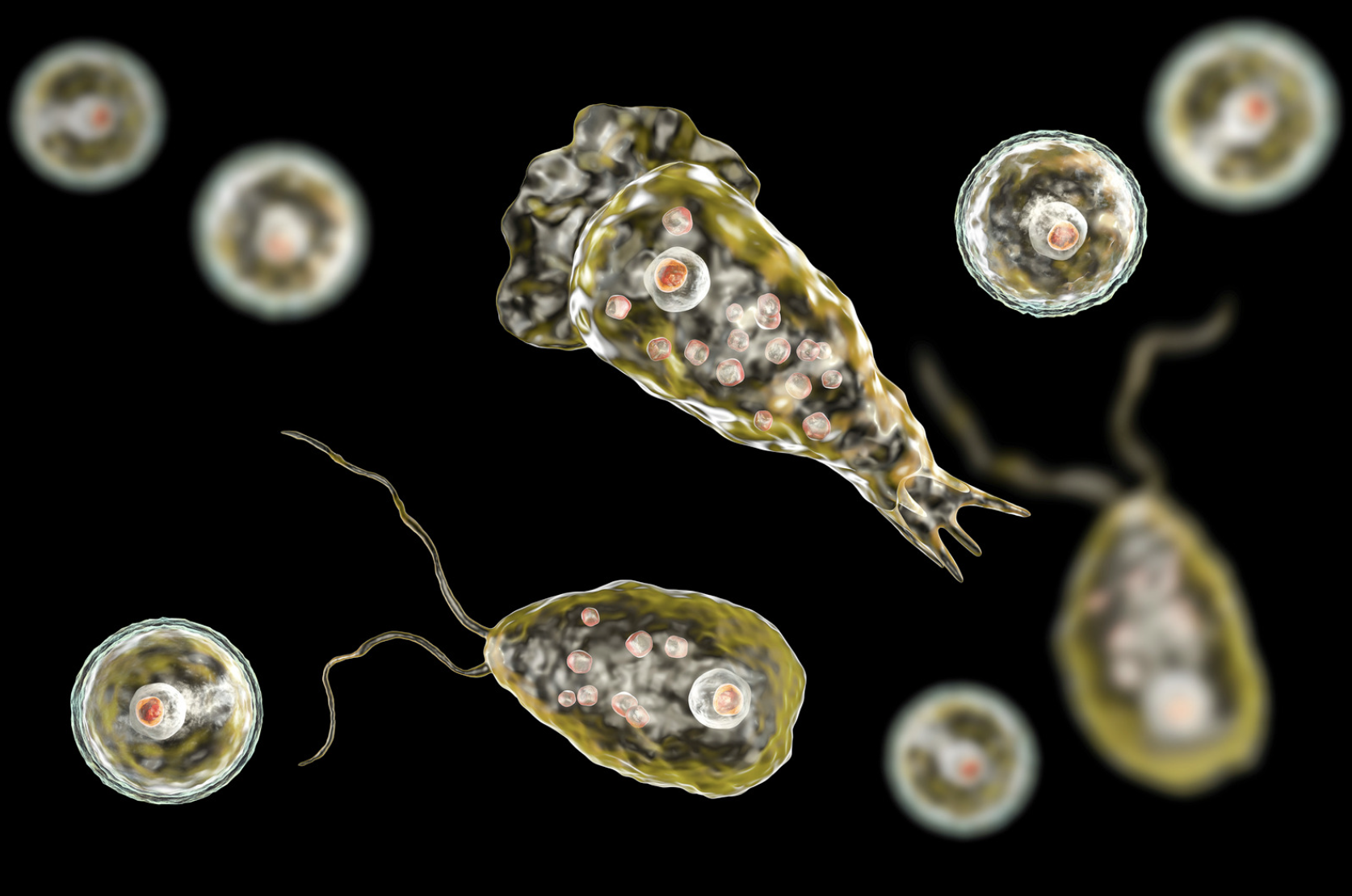Brain-Eating Amoeba
Some of the most terrifying things on Earth cannot be seen with the naked eye. It seems like Nature agrees with this statement, as proven in many ways such as with the existence of the Naegleria Fowleri . N.Fowleri, commonly known as the brain-eating amoeba, is a thermophilic microorganism that thrives in warm and hot freshwater habitats. As one could easily tell by its name, this amoeba possesses the destructive ability to feed on the brain tissues of its victim. Most people who become infected with primary amebic meningoencephalitis (PAM) do not live past 7 days, as this disease is fatal due to the rapid rate at which it progresses.
N.Fowleri’s life cycle consists of 3 stages: cyst stage, trophozoite stage, and flagellate stage. Both the cyst stage and flagellate stage occur when the environmental conditions are unfavorable to the microorganism, such as how N.Fowleri at either the trophozoite or flagellate stage may enter the cyst stage when the temperature drops to an unfavorable degree. This amoeba is only infectious at the trophozoite stage. The infection begins when the harmful amoebae present within the freshwater enters the nose of the victim and makes their way through the cribriform plate within the nasal cavity. From there these amoebae enters the olfactory nerve, leading it directly to the olfactory bulb where it begins to feed on the tissues of the brain’s frontal lobe. The infection worsens as it progresses to other portions of the brain, causing inflammation as the immune system tries to fight off the foreign invaders that are tearing away the brain’s membrane. The inflammation continues as the amoebae eats away the insides of the brain, leading to symptoms such as seizures and hallucinations. If the infection isn’t treated early, the victim is highly unlikely to survive due to the continuous and worsening inflammation.

